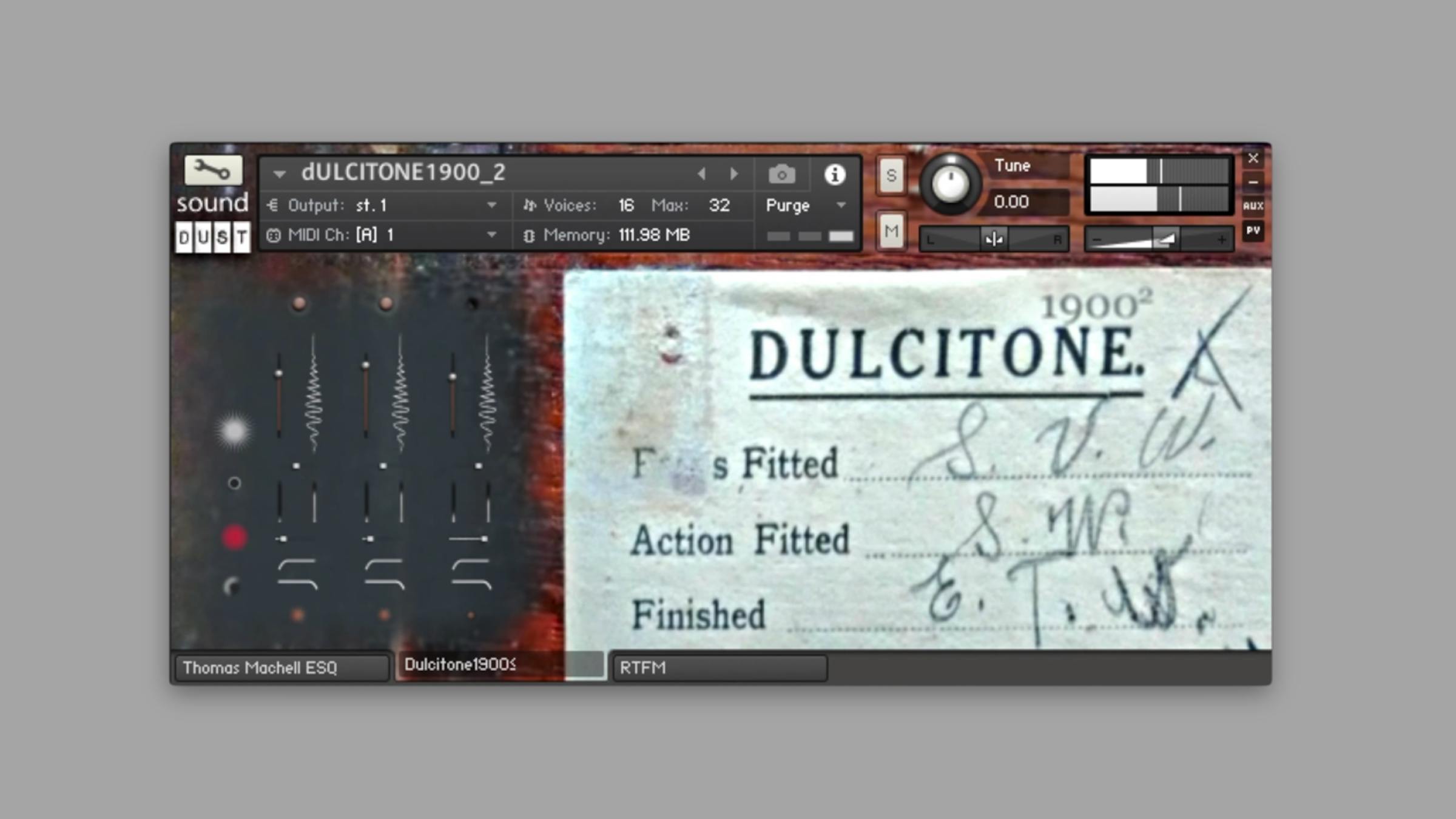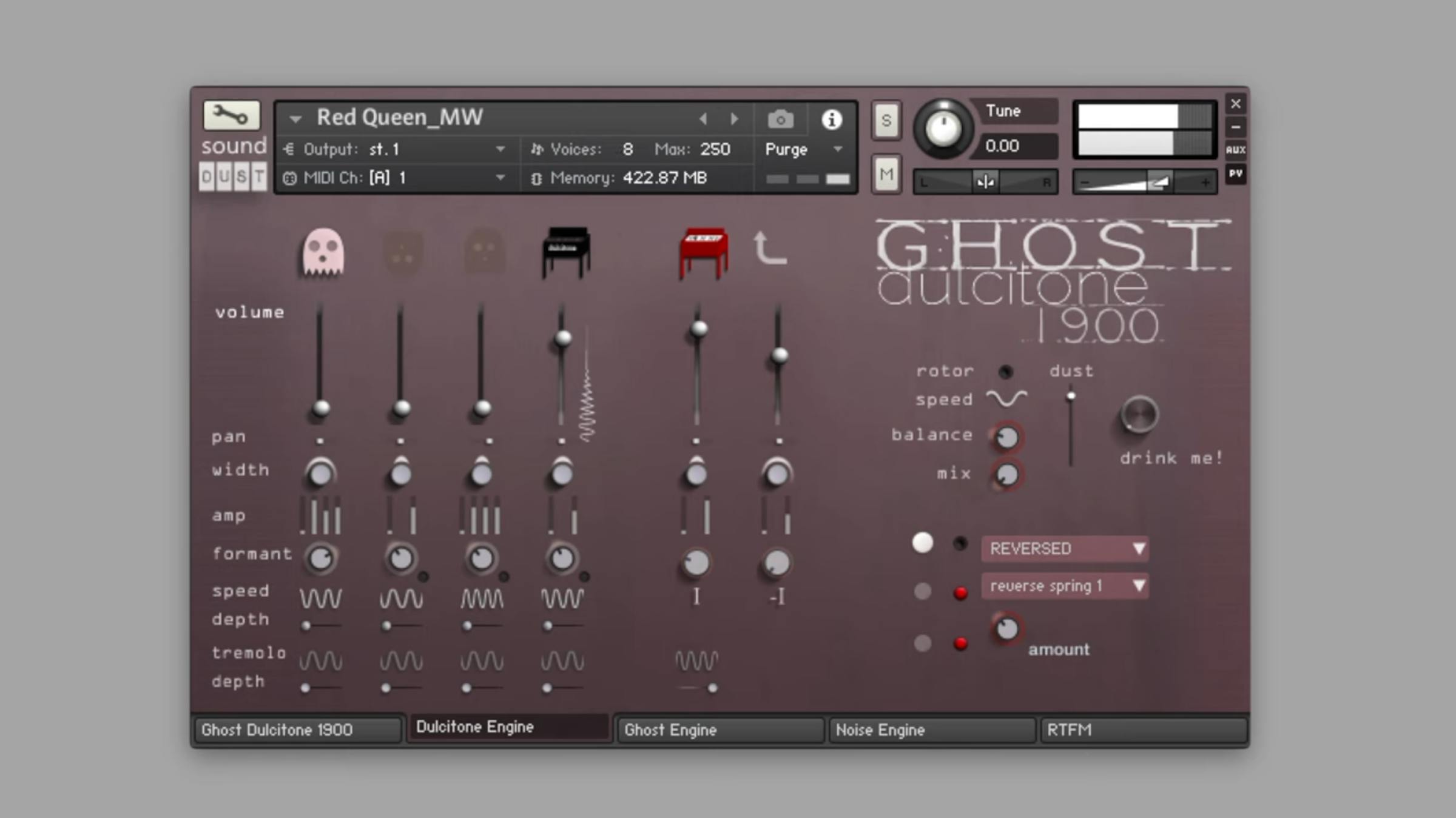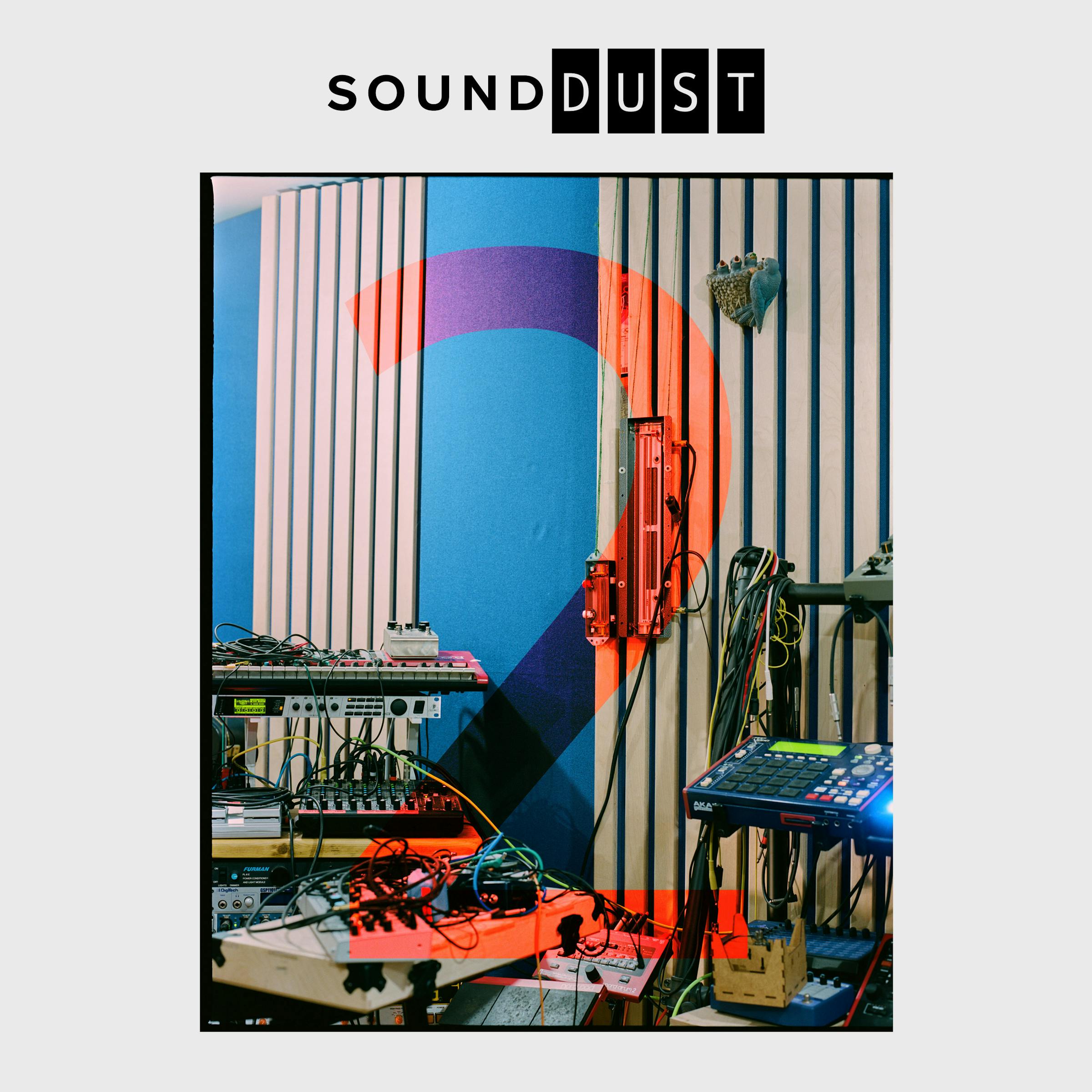Sound Dust Vol. 1
A playground of unique hybrid instruments
A playground of unique hybrid instruments
The first collection of unique, strange and inspiring instruments created by our favourite British sound designer and composer Pendle Poucher — lover of weird and wonderful noises, and brainchild behind innovative boutique Brighton-based sample library company, Sound Dust. Like Spitfire, Sound Dust was created by a composer for composers, producers and music makers. In Sound Dust Vol. 1, discover a diverse selection of six of their most original, best-selling products — ranging from a Hammond organ to 19th century Dulcitones — as you’ve never heard them before. Truly expressive, intuitive leftfield instruments that will spark your imagination.
In this page:
- Hard drive delivery available at checkout
- You can buy now and download any time
 Spitfire Audio App required
Spitfire Audio App required
6 instruments by Sound Dust
Kontakt Full
Listen to Sound Dust Vol. 1
Usually my first thought is: 'Does this thing exist already?' and if it does, then I'm not interested.

Pendle is based at The Toy Rooms Studio in Brighton, UK, a breeding ground for interesting British sounds. This studio complex is a hub of renowned musicians, producers and film composers such as UNKLE, Gomez, Orbital, Nick Cave and Jed Kurzel, surrounded by a multitude of rare instruments and equipment. Pendle has been obsessed with strange sounds for as long as he can remember. He started out by playing guitar in Rough Trade signed art-pop band Butterfly Child and then started working on sound and art installations, including a permanent sound installation for the National Trust at Avebury Manor. He also worked for 10 years as sound designer and composer for award-winning theatre company DreamThinkSpeak, and has written and produced scores for the BBC and many other TV stations in the UK and beyond. For Sound Dust, Pendle mostly works alone, as he prefers to see a project through from start to finish, with laser-sharp attention to detail. “The whole Sound Dust thing started by accident. I bought a beautiful old Dulcitone off eBay... it was kind of knackered and I couldn’t really play it, so I decided to sample it. I then started selling the samples which to my surprise was amazingly popular and it all grew from there. Had I not started with the Dulcitone, Sound Dust wouldn’t be what it is today. Sound Dust is essentially me indulging my desire to make funny noises.”
Sound Dust Vol. 2
In creating a Sound Dust library, Pendle does not limit himself to one type of sound or instrument — the only requirements are that it makes an interesting noise and that he can create something with it that hasn’t been heard before. As a sound designer who delights in the alternative and unexpected, he wants anything but the industry standard.
His process is far from formulaic — sometimes he will obsess over a certain type of sound and try to create it, but most of the time, what sparks his imagination is chancing upon an interesting instrument or combination of instruments, or discovering a new way of recording something. “The process usually starts with a ‘What If?’ moment. If I do this, what will happen? I’m driven by the idea that something will do something that something else doesn’t already do, or do it better. It really feeds the part of the brain that I enjoy the most. Often an idea will start as one thing and then go to an entirely unexpected place. I don’t know what I’m doing month to month, and that’s kind of exciting. The essence of Sound Dust is, you’re never sure what you’re gonna get!” Pendle injects his personality and eclectic taste into his instruments, from his unconventional recording process, down to the naming of each Sound Dust offspring.
"If I’m not happy with a name for something, I can’t release it." He describes his process as more mechanical than digital. “I’ve used various processes and techniques, for instance, bowing cellos with a long piece of garden string, attached to a dog lead, to create an extended bowing technique. And on the more technical side, convolution reverbs where you use an actual instrument sound as a convolution impulse and then push a sound through it, which is the reverse of what you would normally do. It’s a case of using your imagination — that ‘What If’ moment.”

“My approach is not like a proper composer — I make organised noise. For me, the sounds are more important than the notes. I’m always thinking about the timbre and the quality of the sound, and then I try to make that into a musical thing.” That’s what this unique collection of toys is designed for — media composers and producers looking for expertly recorded sample libraries with endless sound designing possibilities and inspiring hybrid sounds to spark the imagination. “What is still fantastic about sampling is, with a bit of time and a bit of effort, you can imagine a thing and make it so.” Pendle provides you with all the gadgets, outboards and sampling trickery in one box, allowing you to focus on your composition. Highly innovative, hybrid instruments warped and editable beyond recognition, with everything from woozy, ghostly evolving sounds to majestic, punch-drunk orchestral pads for genre-defying, leftfield music.

Plastic Ghost Piano
The Plastic Ghost Piano, a Spitfire favourite, is a strange, beautiful, analogue sounding hybrid piano, made by pushing bursts of controlled noise through unsuspecting piano samples. Warm and richly sampled, oozing character and endless sonic possibilities, there really is nothing else quite like it. Sounds range from woody and expressive acoustic piano to a soft, gorgeous felt piano, paired with ambient, otherworldly sounds, recorded as convolutions.

Grand Thrift AutoHarp²
Grand Thrift AutoHarp² is what happens when you mate a tiny autoharp with a huge binaural plucked grand piano. A strange hybrid instrument, with four separate and individually adjustable layers of multi-velocity samples from every note of both instruments, recorded binaurally, with a pick and a mute, creating unique piano-like, plucky sounds. With multiple effects on the pluck, it really shakes the room.

Dulcitone 1884²
This rare instrument is the world’s first multi-sampled 134 year old Dulcitone, and was the very first Sound Dust instrument. A woody, clonky sound reminiscent of a celeste, but more metallic sounding, with added octaves added to take it beyond what a normal Dulcitone can do.

Dulcitone1900²
Originally designed and manufactured in Scotland in the 1800s, there are allegedly only 2000 Dulcitones left in existence. This is the younger sister of the Dulcitone1884², a delicate beauty with a more bell-like, even tone, complimenting the woody clunk of the 1884 version. A bit like an acoustic version of the Fender Rhodes electric piano it has seven velocity layers of binaural recording.

Ghost Dulcitone 1900
A creation of haunting beauty. Sound Dust have taken multisampling impulse responses and experiments originally used to create the Plastic Ghost Piano, and applied their nifty digital witchcraft to a rare collection of Dulcitones. Individual recordings of notes demonically convolved and fed with white noise to create the ghostly tone, layered with a roomy multi-sampled Nord electric piano, recorded binaurally for added depth and body. Think Danny Elfman’s The Night Before Christmas.

Hammr +
Some may argue that another sampled Hammond is the last thing we need, and they’d be right, but the Hammr+ is different. Of course, it oozes classic character and has all the capabilities you'd expect of the famous drawbar organ, but in true Sound Dust style, it surpasses the limitations of the original. In taking advantage of sampling technology, bespoke Kontakt architecture, on top of a bit of imagination, Pendle has created sounds inconceivable to the creator of the original instrument.
What's included
Six innovative instruments by Sound Dust
Plastic Ghost Piano
Grand Thrift Autoharp
Dulcitone 1884
Dulcitone 1900
Ghost Dulcitone
Hammr +
FAQs
Tech specs
Mac system requirements
Mac OS 11, 12 or 13
Both Intel and Apple Silicon/ARM are supported
Minimum: 2.8GHz i5 minimum (quad-core), 8GB RAM
Recommended: 2.8GHz I7 (six-core), 16GB RAM
32-bit systems are not supported.
PC system requirements
Windows 7, Windows 8, or Windows 10 (latest Service Pack, 32/64-bit)
Intel Core 2 Duo or AMD Athlon 64 X2
Machine must be connected to the internet during install
File size
~1626 samples
4.20 GB download size
8.40 GB disk space required during install
Too large to download? Choose hard drive delivery at checkout
Kontakt player
Windows 10 or Windows 11 - (Latest Service Pack, 64-bit)
Minimum: Intel 2.8 GHz i5 (quad-core) or AMD Ryzen 5, 8GB RAM
Recommended: Intel Core i7 6th gen and later or AMD Ryzen 7, 16GB RAM
32-bit systems are not supported.
